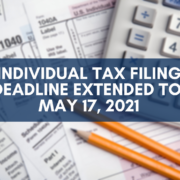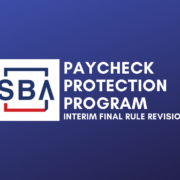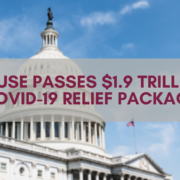Individual Tax Filing Deadline Extended to May 17, 2021
On Wednesday, March 17, the U.S. Treasury Department and Internal Revenue Service announced that the federal income filing date for individuals for the 2020 tax year will be automatically extended from April 15, 2021, to May 17, 2021. In addition, any balance due payment for the 2020 tax year is now due on May 17, 2021, instead of April 15, 2021. In line with the federal extension and payment due dates, the Illinois Department of Revenue and Missouri Department of Revenue have also extended individual income tax filing and payment deadlines from April 15, 2021, to May 17, 2021.
First Quarter 2021 Federal and State Estimated Tax Payments
The May 17, 2021 filing and payment of balance due extensions for 2020 individual tax returns do not apply to the first quarter estimated tax payments for tax year 2021. These tax payments remain due on April 15, 2021.
Corporations, Trusts, and Estates
The May 17, 2021 extensions as noted above do not extend the due date of C-Corporations, trust returns, and estate returns and are still due by April 15, 2021.
Hours of Operation
At Scheffel Boyle, our experienced tax professionals have been working extended hours. As such, our offices will continue to operate with our extended hours until April 15. We urge our clients to continue to bring in their tax information to our offices and we will keep you informed.
As always, feel free to contact your preferred office if you have any questions or require additional assistance. We are here to help!




